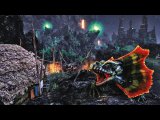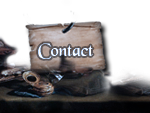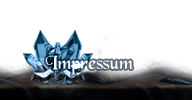Risen Test

The novice farm - one of the first locations where the player will spend more time.
Not only magazine outside Germany struggle with some fundamental design concepts of RISEN, which are so different from mainstream RPGs like Bethesda's Oblivion. Even many gamers are uncertain what to make of it. Will Piranha Bytes forfeit their old ideas and go with the mainstream? Is the game innovative enough? Or is innovation relevant anyway? Do we have to mount quadrangular wheels on our cars now just to experience something new? Old fans of the developer's games hope for a revival of the old Gothic 1 and 2 gameplay. But there is also a group of gamers that was pleased with the basic design of Gothic 3 and only felt disturbed by the unfinished state in which the game was released. Where does all that leave RISEN? And will it be as buggy as Gothic 3? What about the hardware requirements? Many questions are asked by the fans and Deep Silver provided us with some test versions to help us answer these questions.
Where am I?
As a typical Piranha Bytes game, RISEN does not impede you with a character generation. You start immediately with the story and are given a nameless, male character. While Gothic 2 and 3 gave you almost instant information about your main objective, RISEN is closer to Gothic 1 here. Flat broke and without a clue, you awake on the shores of Faranga and have to work to get information about the world and what is going on in it. To give players who would otherwise feel a bit abandoned some guidance, there is a tutorial character. Sara was with you on the ship and is lying only a few feet from your position. If you talk to her, she will explain to you a few basics of the game and the world you're in. She is an optional helper, players who do not want her guidance can leave her to her fate. Of course, decisions like that have consequences. If you abandon Sara, you might find her dead body later on.
The first few informations about the different factions which control the island come very early. In the course of the game, more details will be revealed and it is made clear to you that you have to join one of them if you want to persist on Faranga. But you can delay that decision for the entire first chapter.
The joining of a faction is a mixture of Gothic 1-3. At first, you can do your quests for all factions. But there are key quests which can be made only for one faction. Every time you complete such a key quest, you come closer and closer to a certain faction. Until you have made the final step and the other factions won't give you any more quests. Then the decision is made and you have to play with that faction.
The rest of the story is then experienced from the perspective of that specific faction and the replay value comes from changing this perspective as well as the skills and faction-specific quests that open up.
Whereas Gothic 3 had a more copious world, the RISEN world is much more compact. It is folded on many layers, winding and full of detail. Waterfalls often emphasise the different height layers and also serve as pituresque elements in the scene. Swamps are followed by forests or canyons. Mountains, high cliffs and other obstacles seperate these areas from each other and cut off visual axes, thus making the world seem larger than it really is.
The scene changes with almost every twist in the road. Peaceful or abandoned farms are followed by forests which lead to a lake, a meadow or a swamp. Or maybe a cave. All caves and dungeons are carefully crafted by hand. Knowing one will not help a bit with the next.
As peaceful as the island may seem on a screenshot or a certain location, it is full of dangers. Many creatures roam the world, just waiting for a careless adventurer as a meal. Sea vultures, wolves, boars and gnomes have all different strategies when they attack you, although they only become a problem on higher levels if they attack you in numbers. Ghouls are dangerous and fast, always evading your attacks and striking back when you try to turn to them. The large thunder lizards hide inside their shells where your attacks cannot reach them and only come out for a quick strike. Many of the monsters you encounter require you the devise a new strategy to beat them. What worked perfectly against thunder lizards will prove fatal against brontoks.
The caves and dungeons may not always be as deep and spacious as the Old Mine in Gothic or the large underground halls of the temple of the Sleeper but they still carry a lot of Sleeper temple feeling. Deep chasms, lava streams, traps and hidden mechanisms. The dungeons are the part of the game where you just can't thrash your way though. You have to watch your environment carefully, examine walls and floors closely and keep looking for alternatives. If you are out of levitation spells to fly over the spike trap, maybe you can use telekinesis to move the deactivation lever on the other side of the trap? Or is there a small and hard to spot crack in the wall where you can crawl though if you transform into a Nautilus (looks a bit like a hermit crab on land)? There often several ways to solve a problem and the most obvious is not always the best.
The different settlements which you reach during your exploration offer you the well known questing scheme from Gothic 1 and 2. Many quests are intertwined, one leads to another and yet another and some quests can only be solved by talking to a lot of people. However, many quests lacked the possibility to be completed in different ways. Most of them have only one way of completion.
The appearance of the NPC is acceptable but not top of the line. There is a sufficient variety in the male models to prevent you from feeling confronted with a clone army. Beaked noses, bald and furry head, beards and other elements make the NPCs look different. Unfortunately, the female models are not as good. They have some strange proportions and always the slim body of a photo model. The NPCs do not look like plastic anymore as they did in Gothic 3 and they can blink! The voices are good and varying. All in all, the NPC resemble the old Gothic games with their little exaggerated design and their rough and sometimes vulgar behaviour.































